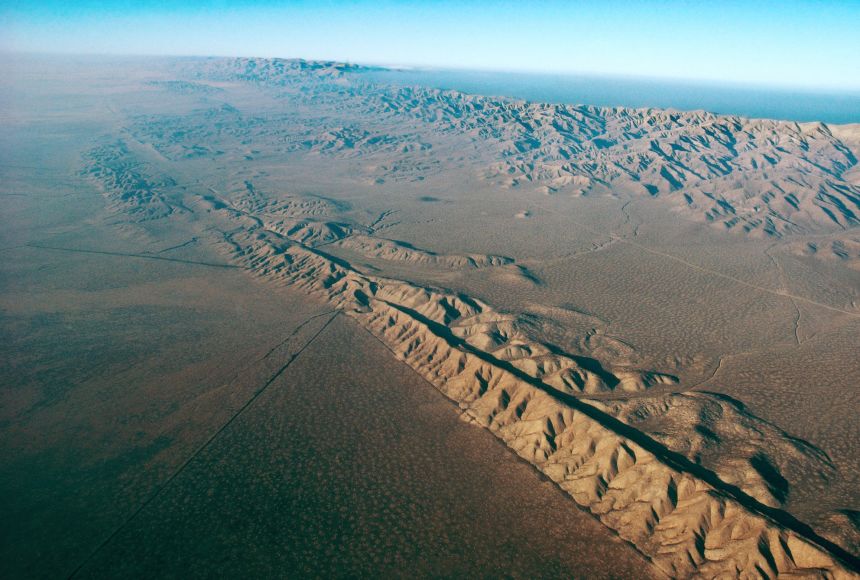Earth, our home in the vast universe, is a dynamic and ever-changing world. Beneath its seemingly stable surface lies a complex network of tectonic plates, vast segments of the Earth’s lithosphere that float on the semi-fluid asthenosphere below. These tectonic plates are in constant motion, driven by the immense forces generated deep within the Earth. In this article, we will delve into the fascinating world of Earth’s tectonic plates, exploring the forces that drive their movement, the geological phenomena they produce, and their profound impact on shaping our planet.
Understanding Earth’s Tectonic Plates
The Earth’s lithosphere is divided into several large and small tectonic plates, each with its unique characteristics and boundaries. These plates are composed of both oceanic and continental crust, the outermost layers of the Earth, which float atop the semi-fluid asthenosphere due to differences in density and buoyancy.
There are three primary types of plate boundaries where tectonic activity occurs:
- Divergent Boundaries: At divergent boundaries, tectonic plates move away from each other, creating new crust as magma rises from below. These boundaries are typically found along mid-ocean ridges, where new oceanic crust is formed through volcanic activity.
- Convergent Boundaries: Convergent boundaries occur where tectonic plates collide, leading to the subduction of one plate beneath another or the uplifting of crustal material. This process often results in the formation of mountain ranges, volcanic arcs, and deep-sea trenches.
- Transform Boundaries: Transform boundaries are characterized by horizontal movement between tectonic plates, where two plates slide past each other. These boundaries are responsible for creating strike-slip faults, such as the San Andreas Fault in California.
Forces Driving Plate Tectonics
The movement of Earth’s tectonic plates is driven by a combination of forces, both internal and external, that act upon the lithosphere:
- Mantle Convection: Heat from the Earth’s core creates convection currents within the semi-fluid asthenosphere, causing magma to rise and fall in a cyclical motion. These mantle convection currents exert horizontal forces on the overlying tectonic plates, driving their movement.
- Slab Pull: At convergent boundaries, the denser oceanic plate sinks or subducts beneath the less dense continental plate. This process generates a gravitational pull, known as slab pull, which helps drive the movement of tectonic plates.
- Ridge Push: Along divergent boundaries, the formation of new oceanic crust at mid-ocean ridges pushes older crust away, creating a ridge push force that drives plate movement towards subduction zones.
- Lateral Shear: Transform boundaries experience lateral shear forces due to the horizontal movement of tectonic plates sliding past each other, leading to the formation of strike-slip faults and seismic activity.
Geological Phenomena and Tectonic Activity
The movement of Earth’s tectonic plates results in a wide range of geological phenomena that shape our planet’s surface and interior:
- Volcanism: Volcanic activity occurs primarily at convergent and divergent boundaries, where magma rises to the surface, leading to the formation of volcanoes, volcanic arcs, and hotspots. These volcanic eruptions play a vital role in recycling Earth’s crust and releasing gases into the atmosphere.
- Earthquakes: Tectonic movement along plate boundaries generates stress and strain within the Earth’s crust, resulting in seismic activity or earthquakes. These natural disasters can cause significant damage and pose threats to human settlements and infrastructure.
- Mountain Building: The collision of tectonic plates at convergent boundaries leads to the uplift and folding of crustal rocks, creating mountain ranges such as the Himalayas, Andes, and Rockies. These majestic peaks bear witness to the ongoing tectonic forces shaping our planet.
- Ocean Basin Formation: Divergent boundaries play a crucial role in the formation of new oceanic crust and the expansion of ocean basins. As tectonic plates move apart, magma fills the gap, creating underwater mountain ranges and rift valleys.
The Impact of Plate Tectonics on Earth’s Climate and Habitability
While plate tectonics primarily operate on geological timescales, their influence extends to Earth’s climate and habitability:
- Carbon Cycle: Volcanic activity associated with plate tectonics releases carbon dioxide and other gases into the atmosphere, influencing the Earth’s climate and contributing to the carbon cycle. Over geological timescales, these processes play a role in regulating Earth’s temperature and maintaining a habitable environment.
- Ocean Circulation: The formation and movement of tectonic plates impact ocean currents and circulation patterns, influencing global climate systems and weather patterns. Changes in ocean circulation can lead to variations in temperature, precipitation, and sea levels, affecting ecosystems and human societies.
- Biodiversity: The dynamic nature of Earth’s tectonic plates creates diverse habitats and ecosystems, contributing to the evolution and biodiversity of life on our planet. Mountain ranges, ocean basins, and volcanic islands provide unique environments that support a wide range of species and ecological niches.
Conclusion
Earth’s tectonic plates are the driving force behind the dynamic and ever-changing nature of our planet. From the formation of mountains and oceans to the occurrence of earthquakes and volcanic eruptions, plate tectonics shape the landscape and influence the climate, habitability, and biodiversity of Earth.
As we continue to study and understand the complex interactions within Earth’s lithosphere, asthenosphere, and core, we gain valuable insights into the processes that have shaped our planet’s past, present, and future. The ongoing exploration of plate tectonics not only deepens our understanding of Earth’s geological history but also highlights the interconnectedness of Earth’s systems and the delicate balance that sustains life on our precious blue planet.
In our quest to unravel the mysteries of Earth’s tectonic plates, we are reminded of the awe-inspiring forces that govern our world and the profound impact they have on shaping the natural wonders that define our planet. Through continued research, exploration, and stewardship of Earth’s resources, we can appreciate the beauty and complexity of the dynamic Earth system, fostering a deeper connection to the living planet we call home.
Read More: Coinbase Aims to Escalate Core Issue in U.S. SEC Case to Higher Court
